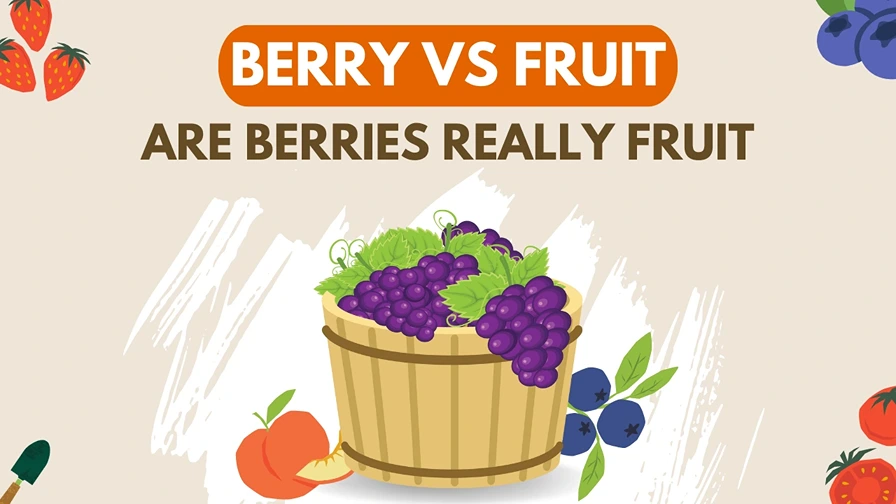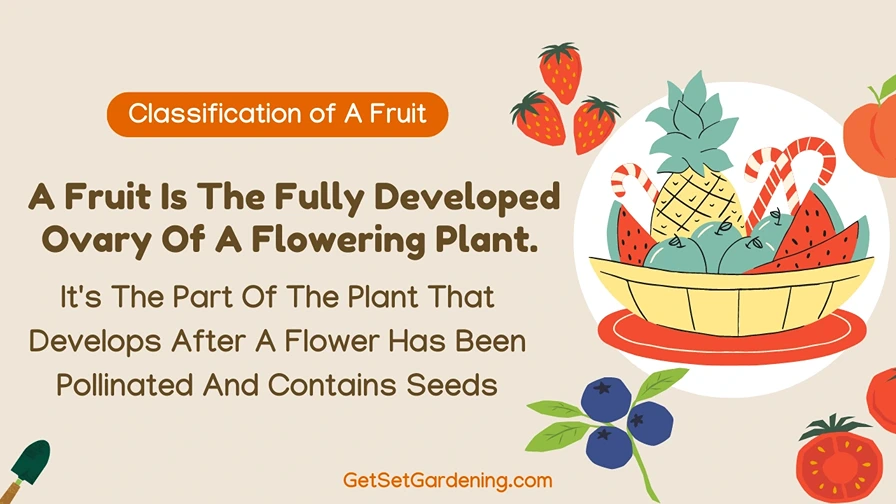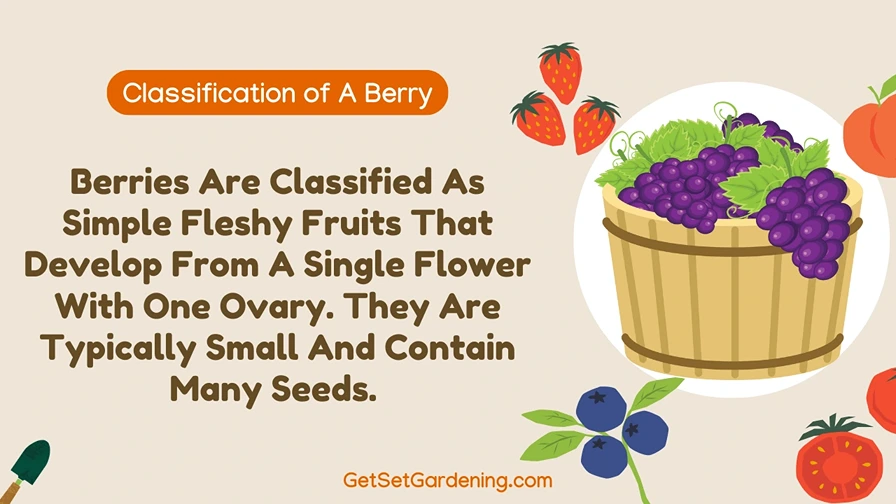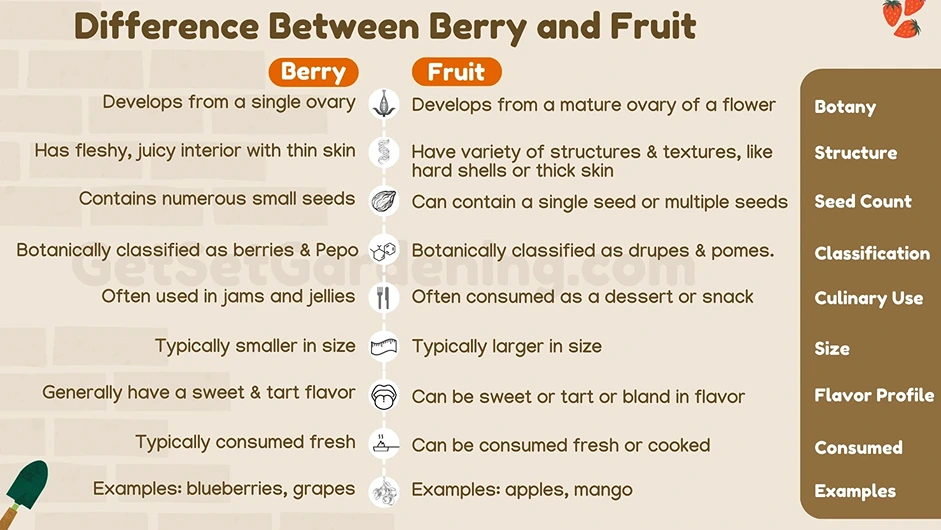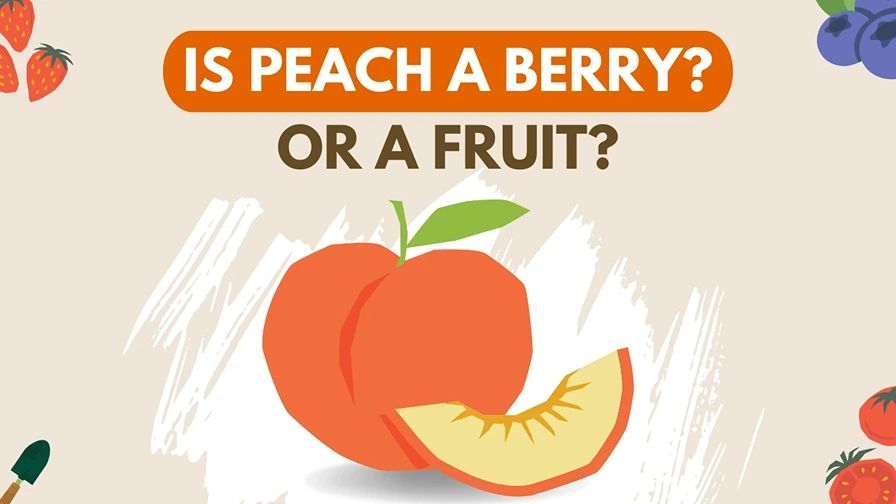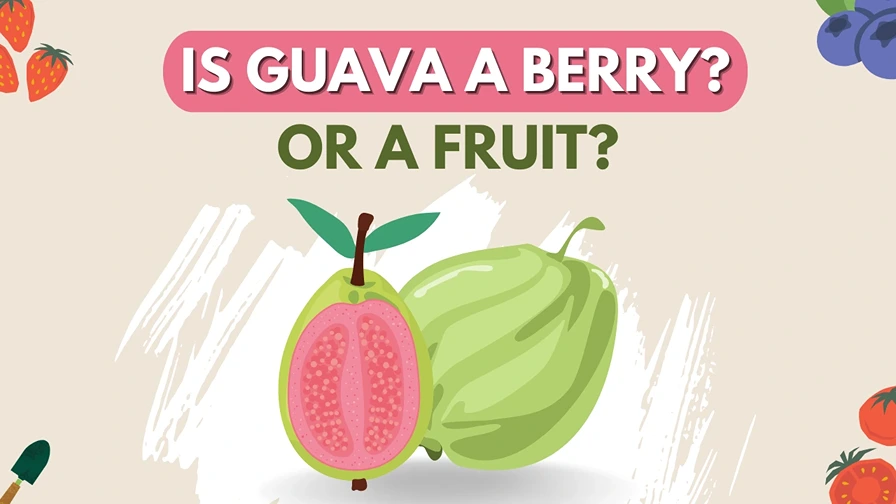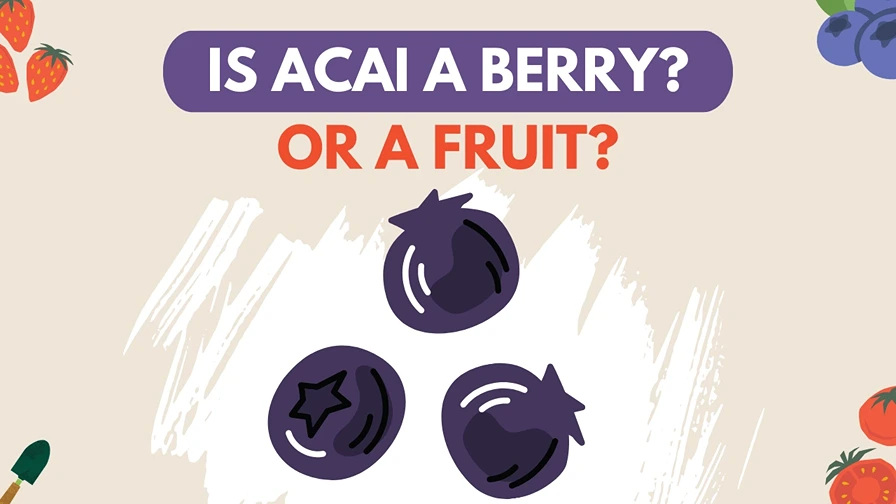Knock knock! Are all berries fruits, or are all fruits berries? Who is who? This is one of the most common questions that many people ask when it comes to understanding the truth of Berry Vs Fruit.
While it may seem like a simple question, the answer is quite complex.
Berries and fruits are not interchangeable terms, and there are many differences between the two. So, what exactly is the difference between a berry and a fruit?
Berries have fleshy fruit walls that surround one or more seeds and are formed from a single ovary. On the other hand, fruits can have a variety of structures and textures and can contain a single seed or multiple seeds.
In short, a berry is a specific type of fruit that is defined by its structure and characteristics.
In this article, we will dive deep into the botanical and culinary definitions of berries and fruits. We will also explore their unique characteristics, and ultimately answer the question of what sets them apart.
Let’s educate ourselves and fully understand the classification.
What Is A Fruit?
In the botanical sense, a fruit is the fully developed ovary of a flowering plant. It’s the part of the plant that develops after a flower has been pollinated and contains seeds.
This means that any structure arising from a plant’s flower and carrying seeds is considered a fruit, regardless of its flavor, texture, or how we typically use it in cooking.
Let’s take a closer look at the different parts, uses, and types of fruits.
Parts of a Fruit
The fruit consists of the following parts:
- Pericarp: The pericarp is the wall of the ovary, which becomes the wall of the fruit. It can be either fleshy, like in guava or mango, or dry, like in mustard or walnut. The pericarp is further divided into three layers:
- Epicarp: The outermost layer, which forms the peel of the fruit.
- Mesocarp: The middle layer, which is the fleshy and edible part of the fruit.
- Endocarp: The innermost layer, which is the rough portion that surrounds the seed.
- Seeds: Seeds are ripened fertilized ovules. They contain an embryonic plant enclosed in a protective outer covering.
Types of Fruits
Fruits can be classified into three major groups based on the number of ovaries and flowers involved in their formation:
- Simple Fruits: These fruits develop from a single matured ovary in a single flower. Examples of simple fruits include apples, bananas, cherries, pears, plums, and tomatoes. Simple fruits are further categorized into the following types:
- Drupes: Also known as stone fruits, they have a very hard seed inside. Examples include plums, cherries, and peaches.
- Berries: These fruits have a single seed in the center and are juicy. Examples include grapes and blueberries.
- Pomes: Fruits that grow on trees, such as apples and papayas, are categorized as pomes.
- Hesperidium and Pepos: Similar to berries, they include fruits like watermelon and citrus fruits.
- Aggregate Fruits: These fruits develop from multiple matured ovaries formed in a single flower. Each individual ovary is called a “fruitlet.” Examples of aggregate fruits are blackberries, raspberries, and strawberries.
- Composite Fruits: Composite fruits develop from a complete inflorescence and are also known as multiple fruits. There are two types of composite fruits:
- Sorosis: Found in mulberries, jackfruits, and pineapples, these fruits develop from catkin, spike, or spadix type of inflorescence.
- Syconus: This type of fruit develops from the hypanthodium type of inflorescence.
Understanding the different parts and types of fruits helps us appreciate their diversity and the various ways they contribute to our diets.
Here’s an interesting fact: Cucumbers, tomatoes, and squash are fruits!
Explanation: Some vegetables that we commonly think of as vegetables are actually fruits according to the botanical definition. Take tomatoes, cucumbers, and squash, for example. Even though we usually associate them with savory dishes, they are technically fruits because they originate from the flowers of their respective plants.
Now you know what is a fruit and what are different types of fruits. So let’s discuss in detail what a berry is and what are the main differences between a berry and a fruit.
What is a Berry?
A berry is a type of fruit that is produced from a single ovary of a flower. It is characterized by its fleshy, juicy interior and thin skin.
Berries are widely consumed in many cultures and are used in a variety of culinary applications, including baking, cooking, and as a snack.
Botanical Classification of Berries
In botanical terms, berries are classified as simple fleshy fruits that develop from a single flower with one ovary. They are typically small and contain many seeds.
Berries can be further classified based on their structure, such as whether or not they contain a stone or pit, and whether or not they have a thick rind.
Parts of a Berry
A berry is made up of three main parts just like a fruit:
- Exocarp: This is the outermost layer of the berry, which we commonly call the skin.
- Mesocarp: The middle layer is called the mesocarp, and it is the flesh of the berry.
- Endocarp: The innermost layer is called the endocarp, and it surrounds the seeds inside the berry.
Examples of Berries
Here are some examples of berries and their characteristics:
- Blueberries: Small, round berries with smooth skin and a sweet flavor. They are often used in baking and as a topping for breakfast foods like oatmeal and pancakes.
- Cranberries: Small, tart berries with a bright red color. They are often used in sauces and as a garnish for cocktails.
- Grapes: Small, round berries that grow in clusters. They are commonly used for making wine, juice, and as a snack.
- Tomatoes: Small, round berries with thin skin and fleshy interior. They are often used in cooking and as a base for sauces and soups.
- Bananas: Elongated berries with thick skin and sweet, creamy interior. They are often eaten raw or used in baking.
How a Berry Grows
The growth of a berry begins when a flower is pollinated, which happens when pollen from one flower reaches the ovary of another flower.
This fertilization process is essential for the fruit to develop.
After the flower is fertilized, the ovary at the base of the flower starts to grow and expand, eventually turning into a berry fruit. As the fruit matures, the walls of the ovary become soft and fleshy, and the seeds inside become surrounded by a pulpy substance.
Once the fruit is fully formed and ripe, it can be picked and enjoyed as a delicious and nutritious treat!
Berry Vs Fruit – The Difference
The differences between a fruit as a berry and not can be determined by its classification, structure, and characteristics. Let’s discuss that in detail:
- Botanical Classification: In botanical terms, a fruit is the mature ovary of a flowering plant, containing the seeds of the plant. A berry, on the other hand, is a type of fruit that develops from a single ovary and has a fleshy, juicy interior with thin skin.
- Structure: Fruits can have a variety of structures and textures, such as hard shells or multiple seed-containing compartments. Some fruits, such as apples and pears, have a fleshy interior that surrounds a core of seeds. Berries, however, have a thin skin that encases the fleshy interior and seeds.
- Seed Count: Another key difference between fruits and berries is the number of seeds they contain. Fruits can contain a single seed or multiple seeds, while berries contain numerous small seeds.
In Conclusion, a fruit must have a single ovary and a fleshy, juicy interior with thin skin to be classified as a berry.
Fruits that do not meet these criteria are classified as other types of fruit, such as pomes or drupes.
So while all berries are fruits, not all fruits are berries. The key differences lie in their botanical classification, structure, and seed count.
Understanding these differences can help with identifying and classifying different types of fruits and berries. Quickly skim through it to get a clearer idea:
Table showing the difference between fruit and berry:
| Differences | Berry | Fruit |
|---|---|---|
| Botanical classification | Develops from a single ovary | Develops from the mature ovary of a flowering plant |
| Structure | Has a fleshy, juicy interior with a thin skin | Can have a variety of structures and textures, like hard shells or multiple seed-containing compartments |
| Seed count | Contains numerous small seeds | Can contain a single seed or multiple seeds |
| Examples | Examples: raspberries, blueberries | Examples: apples, mango |
| Classification | Botanically classified as berries and Pepo fruit. | Botanically classified as drupes and pomes. |
| Size | Typically smaller in size | Typically larger in size |
| Culinary use | Often used in jams and jellies | Often consumed as a dessert or snack |
| Flavor profile | Generally have a sweet and tart flavor | Can be sweet or tart or bland in flavor |
| Preparation method | Typically consumed fresh | Can be consumed fresh or cooked |
Explanation of Different Fruits Considered Berry
Let’s take a closer look at some well-known specific fruits to understand their classification and clear any confusion:
Watermelon: A Pepo with a Refreshing Taste
Is watermelon really a berry or a pepo? Let’s find out in which category it fits!
- Botanically: Watermelon is a pepo fruit, a type of berry with a hard rind and fleshy center.
- Culinary: In culinary terms, watermelon is considered a fruit, commonly eaten raw and used in salads and desserts.
- Nutritional benefits: Watermelon is a good source of vitamin C, lycopene, and other antioxidants; hydrating and low in calories.
Apple: A Pome Fruit with Versatile Uses
Is Apple a berry or pome fruit? Let’s find out!
- Botanically: Apple is a pome fruit, with a core containing seeds surrounded by a fleshy edible layer.
- Culinary: In culinary terms, Apple is considered a fruit, commonly eaten raw and used in pies, sauces, and baked goods.
- Nutritional benefits: Apple is a good source of fiber, vitamin C, and other antioxidants; aids in digestion and promotes satiety.
Tomato: A Berry That is a Vegetable at Heart
Is Tomato a fruit or berry or a vegetable? Let’s find out!
- Botanically: A tomato is a berry, developed from a single ovary of a flower with multiple seeds and fleshy pulp.
- Culinary: In culinary terms, tomato is considered a vegetable, commonly used in savory dishes, sauces, and salads.
- Nutritional benefits: Tomatoes are rich in vitamin C, potassium, lycopene, and other antioxidants.
Orange: A Hesperidium Packed with Vitamin C
Is Orange a berry? Or is it a citrus fruit? Let’s find out!
- Botanically: Orange is botanically a hesperidium, a type of berry with a leathery rind and juicy pulp.
- Culinary: In culinary terms, orange is considered a fruit, commonly eaten raw and used in juices and desserts.
- Nutritional benefits: Orange is an excellent source of vitamin C, fiber, and antioxidants; supports immune function and skin health.
Kiwi: A Fuzzy Berry with a Tangy Twist
Is kiwi a berry or a citrus fruit? Let’s find out!
- Botanically: Kiwi is botanically a berry, the size of a large egg with a fuzzy brown exterior and a bright green interior with tiny black seeds.
- Culinary: In culinary terms, kiwi is considered as a fruit, commonly eaten raw and used in smoothies, salads, and desserts.
- Nutritional benefits: Kiwi is an excellent source of vitamin C, vitamin K, and dietary fiber; promotes digestion and reduces inflammation.
Acai: A Drupaceous Fruit with Superfood Powers
Is Acai a berry or a drupe? Let’s find out!
- Botanically: Acai is botanically a drupe fruit, with a fleshy outer layer surrounding a hard seed in the center.
- Culinary: Acai fruit is commonly used in smoothie bowls and juices for its deep purple color and sweet taste.
- Nutritional benefits: Acai is high in antioxidants, fiber, and healthy fats; may improve cholesterol levels and brain function.
Pumpkin: A Pepo Fruit Perfect for Fall
Is pumpkin a vegetable or a berry? Is it really a fruit? Let’s find out!
- Botanically: Pumpkin is botanically a pepo fruit, which is a type of berry similar to watermelon, with a hard rind and fleshy center.
- Culinary: In culinary terms, pumpkin is considered a vegetable, commonly used in savory dishes, soups, and pies.
- Nutritional benefits: Pumpkin is an excellent source of fiber, vitamin A, and potassium; may support eye health and immunity.
Pineapple: A Multiple Fruit with a Tropical Flair
Is Pineapple a berry or a fruit? Let’s find out!
- Botanically: Pineapple is a multiple fruit, formed by the fusion of multiple flowers on a single stem.
- Culinary: In culinary terms, Pineapple is considered a fruit, commonly used in smoothies, desserts, and savory dishes for its sweet and tangy taste.
- Nutritional benefits: Pineapple is a good source of vitamin C, manganese, and bromelain, an enzyme that aids in digestion; may reduce inflammation, and promote wound healing.
Peach: A Fuzzy and Juicy Drupe
Is peach a berry or a Drupe? Let’s find out!
- Botanically: peach is a drupe, a type of fruit with a hard outer layer surrounding a seed
- Culinary: peach is often used in desserts like pies and cobblers, or eaten fresh as a snack
- Nutritional benefits: peach is a good source of vitamin C, potassium, and dietary fiber; low in calories
Plum: A Sweet and Smooth Drupe
Is Plum a berry or a drupe? Let’s find out!
- Botanically: Plum is a drupe, with a smooth and often waxy exterior.
- Culinary: Plum is commonly used in preserves, jams, and baked goods
- Nutritional benefits: This fruit is a good source of vitamin C and dietary fiber; low in calories
Corn: A Versatile and Nutritious Grain
Is corn a vegetable or a berry or grain? Let’s find out!
- Botanically: Corn is botanically a fruit that grows from a flower and the ovary making it a fruit.
- Culinary: Corn is often treated like a vegetable or fruit in culinary applications, with the kernel being the edible part.
- Nutritional benefits: Corn is a good source of fiber, B vitamins, and minerals like iron and zinc; low in fat.
Avocado: A Creamy and Nutrient-Dense Berry
Is Avocado a berry or a fruit? Let’s find out!
- Botanically: Avocado is a single-seeded berry, with a smooth exterior and large seed in the center.
- Culinary: Avocado is often used in savory dishes like guacamole or as a spread on toast.
- Nutritional benefits: Avocado is high in healthy monounsaturated fats, fiber, potassium, and vitamins C and K; low in sugar.
Mango: A Sweet and Tropical Drupaceous Fruit
Is mango a berry or a fruit? Let’s find out!
- Botanically: Mango is botanically a drupe, with tough, leathery skin and a juicy, sweet interior and a seed inside.
- Culinary: Mango is often used in tropical fruit salads, smoothies, or as a flavoring in various dishes.
- Nutritional benefits: Mango is a good source of vitamin C, vitamin A, and dietary fiber; low in calories.
Guava: A Juicy and Seedy Berry
Is Guava a berry? Let’s find out!
- Botanically: Guava is botanically a berry, with a green, yellow, or pink exterior and a juicy, often seedy interior.
- Culinary: Guava is often eaten fresh or used in jams, jellies, and other desserts.
- Nutritional benefits: Guava is high in vitamin C and dietary fiber; low in calories.
Lychee: A Sweet and Exotic Drupaceous Fruit
Is lychee a berry or a fruit? Let’s find out!
- Botanically: Lychee is a drupaceous fruit, with a fleshy exterior and hard seed in the center.
- Culinary: Lychee is often eaten fresh or used in desserts.
- Nutritional benefits: Lychee is a good source of vitamin C and potassium; low in calories.
Lemon: A Tart and Fragrant Hesperidium
Is lemon a berry or a citrus fruit? Let’s find out!
- Botanically: Lemon is a citrus fruit or hesperidium which is a type of berry, with a tough, leathery exterior and soft, juicy interior divided into segments containing seeds.
- Culinary: lemon is often used as a flavoring agent in various dishes and beverages like lemonade.
- Nutritional benefits: Lemon is high in vitamin C and flavonoids, which have antioxidant properties; low in calories.
Bananas: A Berry in Disguise
Are bananas a berry or fruit? Let’s find out!
- Botanically: A banana is a berry. It belongs to the genus Musa and is classified as a berry because it has seeds encased in fleshy fruit without a stone.
- Culinary: Bananas are considered a fruit. They are consumed in various forms, such as raw, cooked, fried, or baked.
- Nutritional benefits: They are a good source of fiber, vitamins, and minerals.
Strawberries: Not Actually Berries!
Are Strawberries a berry or a fruit? Let’s find out!
- Botanically: A strawberry is not a berry but an aggregate fruit. The flesh of the strawberry is actually the swollen receptacle that holds the ovaries of the flower. The small, black specks on the surface of the strawberry are the actual fruits, called achenes.
- Culinary: Strawberries are commonly known as a berry. They are used in a variety of dishes such as cakes, pies, jams, and smoothies.
- Nutritional benefits: They are also a good source of vitamin C and antioxidants.
Blueberry: A Berry-Packed with Nutrients
Are Blueberries really a berry? Let’s find out!
- Botanically: Blueberries are true berries, belonging to the genus Vaccinium. They have a fleshy fruit surrounding multiple seeds.
- Culinary: Blueberries are considered a fruit. They are eaten raw, cooked, or used as an ingredient in various recipes, including baked goods, jams, and syrups.
- Nutritional benefits: Blueberries are also rich in antioxidants and other nutrients, making them a healthy addition to any diet.
Grapes: A Vine-ripened Treat
Is grape a berry or a fruit? Let’s find out!
- Botanically: Grape is botanically a berry. It is a type of fruit that grows in clusters on vines.
- Culinary: Grapes are typically consumed as a fruit, either raw or dried. They are also used in winemaking, as well as in cooking and baking.
- Nutritional benefits: Grapes are a good source of vitamin C, antioxidants, and other nutrients.
Cherry: A Fruity Drupe
Is cherry a fruit or a berry? Let’s find out!
- Botanically: Cherries are classified as a drupe, which means they have a fleshy exterior and a hard stone containing a single seed.
- Culinary: Cherries are commonly eaten as a fruit, either fresh or cooked. They are also used as an ingredient in many desserts, pastries, and jams.
- Nutritional benefits: Cherries are rich in antioxidants and other nutrients, making them a great addition to any diet.
Raspberry: An aggregate fruit named berry
Is raspberry a fruit or a berry? Let’s find out!
- Botanically: Raspberries are considered aggregate fruits. They are composed of many small drupelets, each with a single seed, that are fused together.
- Culinary: Raspberries are typically consumed as a fruit, either fresh or used in various recipes, including jams, jellies, and baked goods.
- Nutritional benefits: They are also a good source of fiber, vitamin C, and antioxidants.
Blackberry: A fruit disguised as a berry!
Is blackberry a berry or a fruit? Let’s find out!
- Botanically: Blackberries are considered aggregate fruits. They are composed of many small drupelets that are fused together.
- Culinary: Blackberry is eaten as a fruit, either raw or cooked. They are also used in jams, jellies, pies, and other desserts.
- Nutritional benefits: Blackberries are a good source of fiber, vitamin C, and antioxidants.
Dragon Fruit: A Cactus Delight
Is dragon fruit a berry or a citrus fruit? Let’s find out!
- Botanically: Dragon fruit is classified as a berry, and it belongs to the cactus family. Its scientific name is Hylocereus undatus. The berry fruit has a thin rind and a juicy, sweet flesh that is speckled with tiny edible black seeds.
- Culinary: Dragon fruit is often used in salads, smoothies, and as a garnish for various dishes.
- Nutritional benefits: Dragon fruit is a good source of fiber, vitamin C, and antioxidants, making it a healthy addition to any diet.
Zucchini: A Versatile Fruit-Vegetable
Is Zucchini a vegetable or a berry? Let’s find out!
- Botanically: Zucchini is classified as a pepo fruit, a type of berry and it belongs to the gourd family. Its scientific name is Cucurbita pepo.
- Culinary: Zucchini is often treated as a vegetable in culinary and used in savory dishes such as stews, soups, and stir-fries.
- Nutritional benefits: Zucchini is a good source of vitamin C, potassium, and other nutrients.
Coconut: A Nutty Fruit
Is coconut a berry or a drupe? Let’s find out!
- Botanically: Coconut is classified as a fruit or a nut, and it belongs to the palm family. Its scientific name is Cocos nucifera.
- Culinary: The fruit has a hard, brown, hairy outer shell and a white, fleshy interior that is used for various culinary purposes such as cooking oil, milk, and water.
- Nutritional benefits: Coconut is a good source of fiber, vitamins, and minerals, making it a healthy addition to any diet.
Eggplant: A Versatile Fruit
Is eggplant a vegetable or a berry? Let’s find out!
- Botanically: Eggplant also known as Solanum melongena is a berry belonging to the nightshade family.
- Culinary: Eggplant is often treated as a vegetable and used in savory dishes such as curries, stews, and stir-fries.
- Nutritional benefits: Good source of fiber, antioxidants, and vitamins.
Pomegranate: A Nutrient-Packed Fruit
Is pomegranate a berry or a citrus fruit? Let’s find out!
- Botanically: Pomegranate also known as Punica granatum belongs to the Lythraceae family. A pomegranate is a berry with a hard exterior and fleshy pulp containing seed inside.
- Culinary: pomegranate is often used in salads, smoothies, and as a garnish for various dishes.
- Nutritional benefits: Rich in antioxidants, vitamins, and minerals; supports heart health and boosts immunity.
Cranberry: A Tart and Tangy berry
Is Cranberry really a berry or a citrus fruit? Let’s find out!
- Botanically: Cranberry also known as vaccinium macrocarpon is a berry belonging to the heather family.
- Culinary: Cranberry is often used in beverages, jams, sauces, and baked goods.
- Nutritional benefits: High in vitamin C, antioxidants, and beneficial for urinary tract health.
Blackcurrant: A Small but Mighty Berry
Is Blackcurrant really a berry? Let’s find out!
- Botanically: Blackcurrant also known as the ribes genus is a true berry belonging to the Grossulariaceae family.
- Culinary: Blackcurrant is often used in jams, jellies, and desserts like pies and ice creams.
- Nutritional benefits: Packed with vitamin C, and antioxidants, and supports eye health and the immune system.
Cucumber: A Refreshing Fruit
Is cucumber a berry or a fruit? Let’s find out!
- Botanically: Cucumber is a pepos fruit, which is a type of berry belonging to the Cucurbitaceae family. Is a type of berry that has a tough skin and fleshy pulp containing seeds.
- Culinary: Typically used in salads and sandwiches or pickled.
- Nutritional benefits: Hydrating, low in calories, and contains vitamins and minerals.
Mulberry: A Sweet and Tart Fruit
Is Mulberry a berry or a fruit? Let’s find out!
- Botanically: Mulberry also known as the Morus genus is a multiple fruit belonging to the Moraceae family which grows from multiple flowers.
- Culinary: Often used in jams, jellies, and pies.
- Nutritional benefits: High in antioxidants, and vitamins, and supports digestion and healthy blood sugar levels.
You may be amazed by knowing which fruit is actually a berry and which is not a true berry.
Conclusion
To conclude, while many people may use the terms “berry” and “fruit” interchangeably, they are not one and the same.
Berries are a specific type of fruit that are defined by their structure and characteristics, such as their fleshy walls and single ovary.
Fruits, on the other hand, can vary in their structure, texture, and flavor and may contain one or multiple seeds.
So whether you’re indulging in a juicy strawberry, biting into a crunchy apple, or savoring the tangy sweetness of a raspberry, take a moment to appreciate the fascinating world of fruits and berries and the differences that make them truly unique.

